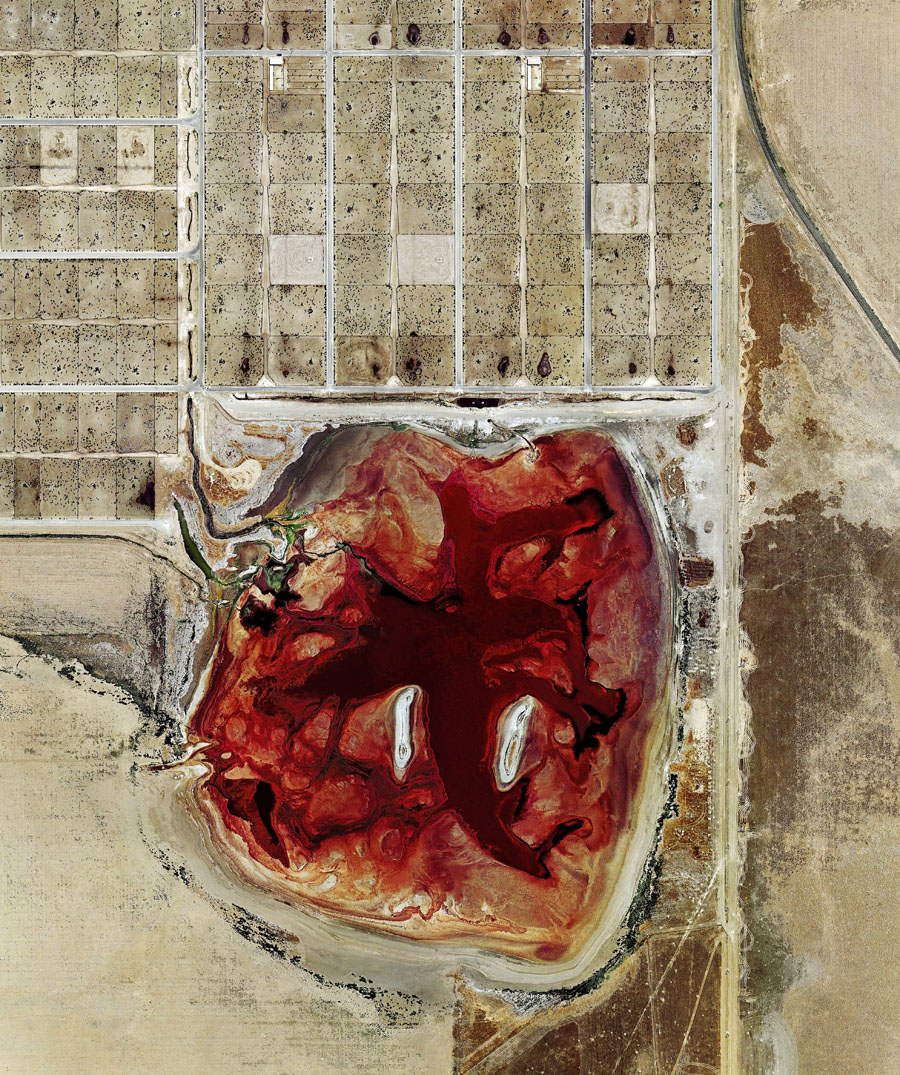I think that satellite imagery offers hitherto unseen perspectives on some of the fundamental drivers of our society.
The tentacles of the superstructure reach so far that it’s impossible to visualize them on the ground; the scales and spheres of influence are simply too big. To see them clearly we have to climb to an altitude of 100 miles.
Coronado Feeders was the final feedlot I found after researching them for over a year. Vice magazine were featuring my work on oil fields and feedlots and the US picture editor, Christian Storm, encouraged me to keep searching right up to deadline.
It struck me as soon as I saw it. Coronado isn’t the largest feedlot in America. With a capacity of 60,000 cattle, it’s less than half the size of some of the biggest.
The configuration of pens, run-off channels, and its lagoon of cattle bodily waste is much the same as any other feedlot. What these elements represent is an efficient method for maximizing the meat yield of a living animal in the minimum amount of time for the highest profit.
Historically, it took 6-9 years for a cow to reach its full mature weight. After that time, the animal was ready for slaughter and processing. Today, after decades of research perfecting the structures and processes of feedyards, this timescale has been reduced to 18 months.
That speed is possible thanks to the inclusion of growth hormones and antibiotics in cows’ diets, and in the efficient architecture of the feedlot. Farmers can turn to in-depth reports detailing the maximum amount of cattle they can fit in each pen, the minimum width and lengths of run-off channels that carry waste products to the holding lagoons, and the composition of chemicals needed to break down the thousands of tonnes of urine and manure that drain into the soil and collect in lagoons.
The feedlot industry is huge business in the US and it has a powerful lobby to back it up. In recent years, several states have passed laws making it illegal for anyone to photograph agricultural sites without permission from the landowners. George Steinmetz, the celebrated National Geographic photographer was arrested in Garden City, Kansas, in 2013 for photographing a feedlot from a microlight whilst on assignment for the magazine.
By all accounts, the meat industry is a subject loaded with a moral and ethical charge. But as I return to this image over and over again, I don’t just see a representation of the meat industry. I see a system for living that also exists in other parts of our culture.
–
Mishka Henner’s exhibition Black Diamond is on display at Carroll / Fletcher, London until 31 May, 2014

